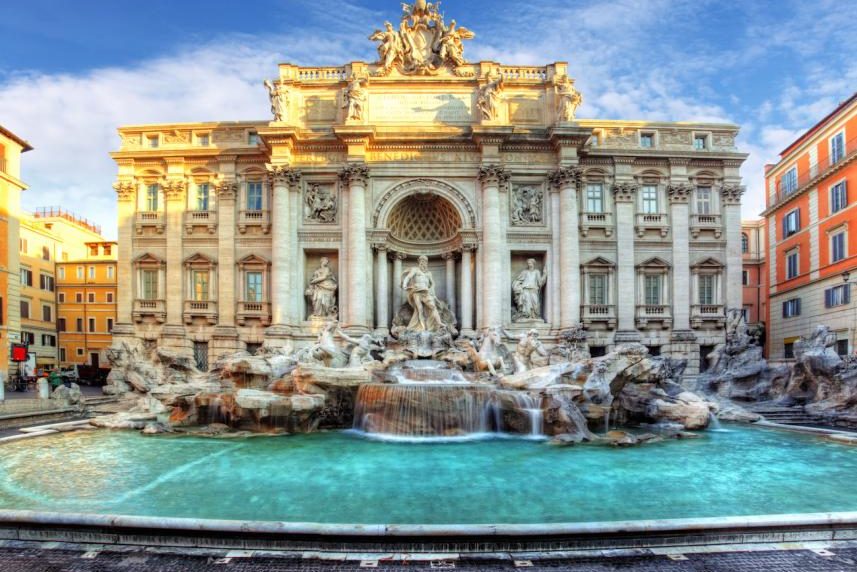When I first heard about Stendhal’s Syndrome I thought it was a joke. It is not. This illness has been scientifically researched and documented; it is also listed in the Zingarelli, the best Italian dictionary. And now you can even look it up on Wikipedia. DO! The variety of symptoms that fall within the realm of Stendhal’s Syndrome were described for the first time in 1817 by the French writer Stendhal (Marie-Henri Beyle, 1783-1843), who lived and traveled in Italy for many years, and wrote many of his masterpieces about Italy.
He recounted that, emerging from the church of Santa Croce in Florence, he felt like “… life was drained out of me… while I walked, I was afraid to fall…”.
In “Naples and Florence: A journey from Milan to Reggio Calabria,” Stendhal further described his symptoms: “I felt my heart pulsating.” He also wrote that he felt “…submerged in a great surging wave of mysterious glory.” For this reason, Florentine Freudian psychiatrist Graziella Magherini, the leading researcher of this disorder, called it Stendhal’s Syndrome, when she started observing and documenting it in 1982.
Once a month, or more often than that, a foreign tourist is rushed to the psychiatric ward of the Hospital of Santa Maria Nuova, where Dr. Magherini works, suffering from mental imbalance, dizziness, disorientation, all brought on by the overwhelming effect of the patient’s encounter with the city’s masterpieces. If extreme, these symptoms can also include the loss of the sense of identity, depression, and physical exhaustion. Dozens of people have been recorded as being so affected in front of Michelangelo’s David, Caravaggio’s Bacchus, or Botticelli’s Venus.

Millions of tourists visit Florence every year. For many years, Dr. Magherini has treated countless victims of this disorder, and has published a study based on case histories and statistics provided by local tourist offices. She noted that more than half of the victims affected come from Northern European countries. Apparently, Italians are immune, and so Japanese: the Italians because they grow up surrounded by art and are used to art, the Japanese allegedly because they are very focused and organized when they travel. Dr. Magherini has drawn the profiles of three kinds of tourists. The first kind “just wants to write postcards and eat pizza.” The second category comprises intellectuals who want to feel the same aesthetic experience felt by Stendhal. The third, most vulnerable group, is made up by “people who are not necessarily intellectuals, but who are deeply sensitive and easily susceptible to emotions… people who, when faced with the impact of the city (Florence), can succumb to a complex crisis that can be catastrophic.” Dr. Magherini adds: “And yet, these people were healthy when they left home.”
Why Florence? Why not Rome? Why not Venice? Dr. Magherini says: “Florence is not a direct cause, but acts as catalyst. Florence is haunted by the ghosts of the great, and impressionable personalities can succumb.”
Art critic Jonathan Turner compared Stendhal’s Syndrome to Rubens’ Syndrome, a syndrome that can cause people to act up sexually when faced with erotic art, such as nude paintings by Rubens. But Stendhal’s Syndrome does not cause any change in the patient’s sexual behavior. Rather, it gives the victim a sense of swooning, queasiness, a feeling of disorientation, of heightened sensitivity, and a sense of panic when confronted with the world of art. Too much of a good thing in Florence? Excessive exposure to art? Could it just be a reaction to the stress of mass tourism? And if so, why has it only been observed in Florence?
The church of Santa Croce in Florence is a masterpiece of architecture. It also contains the burial sites and cenotaphs of great Italians. Santa Croce deeply affected Stendhal, who wrote: “I was in a kind of ecstasy by the idea of being in Florence, and by the vicinity of the great men whose tombs I had just seen. Absorbed in the contemplation of sublime beauty … I reached a point of emotion where the heavenly sensations provided by the fine arts meet passionate feelings.”
In her article entitled “Viaggio a dimensione estetica della conoscenza” Dr. Magherini compared the effect of Stendhal’s Syndrome to that experienced by pilgrims who visit holy places, such as Jerusalem. Dr. Magherini published her findings in a book, “La sindrome di Stendhal,” published by Ponte alle Grazie Editore, Florence. The typical patient she describes appears to be a celibate woman around 40 years of age, traveling alone. Some patients also experience violent chest pains, and go from a state of exaltation to panic and fear of death. One woman reported seeing angels and hearing them sing. Is this a real disease, or is it proof of the immense, powerful effect of art on the human soul?
In 1996, filmmaker Dario Argento directed the homonymous movie, a horror/mystery movie based on a character affected by Stendhal’s Syndrome. The movie was quite successful, and you can watch it on YouTube dubbed in English.
If you happen to be in Florence, this article should not deter you from visiting the magnificent church of Santa Croce. The construction was started in 1294. In front of the church, there is a large piazza, where many manifestations and cultural events take place. The church contains, among others, the tombs of Michelangelo, Galileo, Machiavelli, Dante, Ghiberti, and Rossini. Enough geniuses to make anyone faint.































